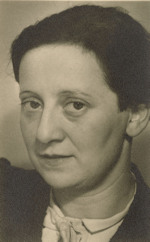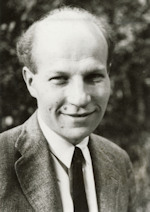
A few institutions in Vienna shine a light on important, but overlooked, historical aspects of the city’s relationship to the applied arts. One such place is the Wien Museum MUSA; the Studio Bauhaus, Vienna exhibition highlights the interwar interior designs of two local Bauhaus acolytes.
- Focus on the life and work of Friedl Dicker and Franz Singer
- Features rarely-seen archival material
- Plans, photos, drawings etc., reveal the creative and modern approach of their studio
- A cooperation with the Bauhaus-Archiv Berlin
- Runs Nov 24, 2022 – Mar 26, 2023
- See also:
- Wien Museum MUSA
- Other design exhibitions in Vienna
Friedl Dicker & Franz Singer

(Activity room in the municipal Montessori kindergarten at the Goethehof, around 1931; press photo courtesy of Bauhaus-Archiv Berlin)
“What might have been” is a concept that hangs around Vienna’s interwar art and design history like a leaden albatross. Particularly when you consider the loss of creativity and intellect that went hand in hand with the rise of fascism.
What might many Austrians have achieved, had they not been persecuted, murdered, or forced to flee the country? The theme is one you often find covered indirectly at exhibitions in the city’s Jewish Museum, for example.
The topic also featured in the Wien Museum MUSA’s recent exhibition, Vienna Falls in Line, which explored the politics of art under national socialism.
The winter 2022/2023 exhibition at MUSA introduces us to two design personalities whose lives also changed irrevocably in the early 1930s: Friedl Dicker (1898-1944) and Franz Singer (1896-1954).
Dicker and Singer both studied under Johannes Itten in Vienna, and followed him along with others of their generation to Germany and the State Bauhaus school in Weimar (Itten became the artistic lead for metal and furniture workshops there).
The Bauhaus influence would prove seminal in Europe, but the Nazi era decimated the lives and work of many of its students and followers who applied their training in Vienna.
Before that dark chapter, though, Dicker and Singer set up an architectural and interior design studio in 1925 Vienna, both becoming part of the dynamic post-WWI modernist movement.
With its detailed overview of Dicker and Singer’s work, the Studio Bauhaus, Vienna exhibition highlights their role in interwar art and architecture.
As well as revealing the history of these Bauhaus acolytes, the exhibition treats us to numerous designs and items (including many never yet seen in public).
So, for example, we see early drawings by the pair when still students of art under Itten.
(Friedl Dicker around 1937/38, and Franz Singer around 1935; press photos courtesy of Art Collection and Archives, University of Applied Arts, Vienna)
The studio made innovative use of colours, and stayed true to holistic principles with a focus on economy of space, sophisticated design, and flexibility of purpose for interiors.
A rough glance at the gallery walls feels like being immersed in contemporary art. But a closer look reveals that what look like abstract paintings are actually colourful architectural room designs that include the furniture.
These projections allow us to see the combination of existing modernist Viennese traditions with the studio’s own innovations. The concept attracted a youthful, open-minded and forward-looking customer base.
Such approaches and clients do not sit easily with authoritarianism and its associated conservatism. As Austria turned to fascism in the early 1930s, both Dicker and Singer left the country.
Singer settled in the UK, and we see, for example, his proposed designs for the porcelain and glass department of the John Lewis department store.
Dicker’s work turned more activist, and the exhibition includes a rendering of one of her politically-charged collages. Sadly, her journey ended with her murder in Auschwitz.
With so much of the pair’s work unable to survive either the times or simply the march of time, archival photos, drafts, models, drawings and similar are often all we have left. Still, they allow us to grasp the contributions made by Dicker and Singer to modernist approaches in both architecture and furnishings.
Dates, tickets and tips
The exhibition runs from November 24th, 2022 to March 26th, 2023. A ticket to the MUSA is, essentially, a ticket for the exhibition, since the rest of this small institution is freely accessible.
Should you pop in during advent, you’ll notice some excitement on the nearby Rathausplatz square. The noise, scents and lights come from the famous Christkindlmarkt market.
Once you’ve had your fill of the Advent spirit and want to continue your exploration of Viennese interior design, find your way to the Furniture Museum. The name tells you all you need to know.
And should that interwar period grab your curiosity, the House of Austrian History is probably the best place to learn more.
Austria rarely dwells too much on the 1930s, for obvious reasons, but this relatively new museum focuses on the country’s post WWI history. Another useful address in that context is the Jewish Museum mentioned earlier.
How to get there
Take a peek at the Wien Museum MUSA page for travel tips.
Address: Felderstraße 6–8, 1010 Vienna

